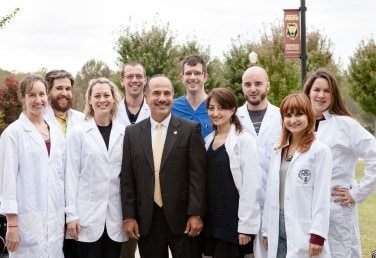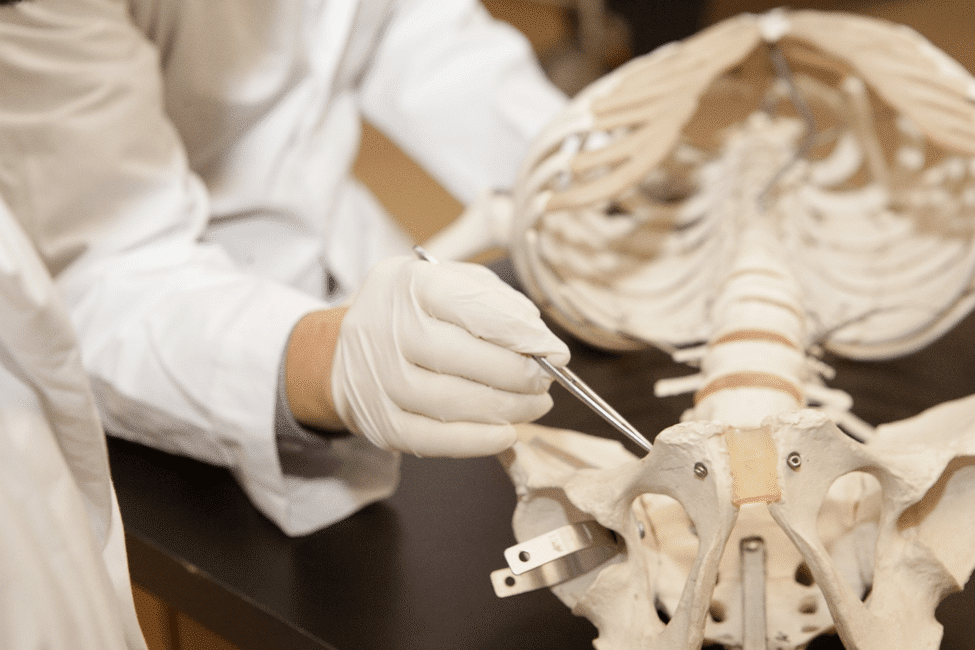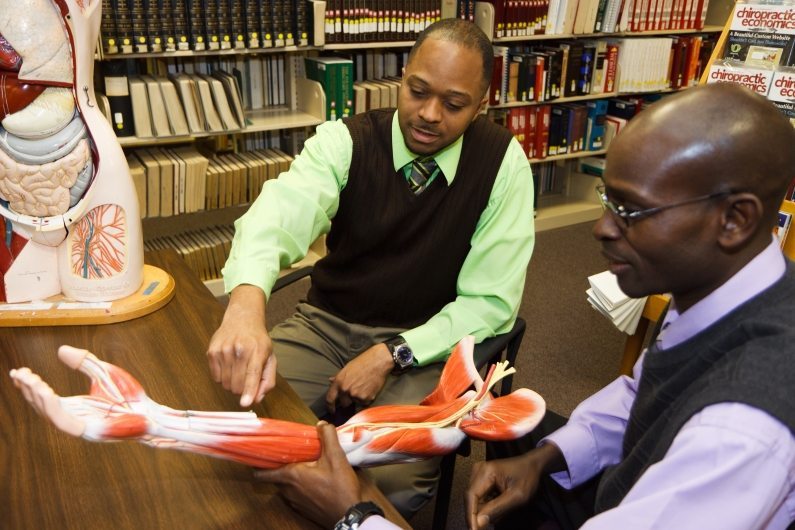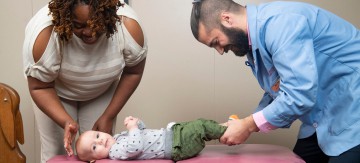[et_pb_section bb_built=”1″ admin_label=”section”][et_pb_row admin_label=”row”][et_pb_column type=”4_4″][et_pb_text _builder_version=”3.0.101″ background_layout=”light” border_style=”solid” header_2_text_align=”center”]
What Top Colleges Teach Students about Chiropractic Science
[/et_pb_text][et_pb_text _builder_version=”3.0.101″ background_layout=”light”]
At Sherman College, students learn about the art, science and philosophy of chiropractic. They learn the art of precisely adjusting patients and the philosophy that guides chiropractors to provide excellent patient care. But what about the science of chiropractic? To become a prominent chiropractor, you’ll need to know all three.
Fortunately, the right chiropractic college can help you obtain the in-depth knowledge you need to become a doctor of chiropractic. At Sherman College of Chiropractic, for example, students delve into topics like anatomy and neuroanatomy to graduate with a thorough understanding of the science behind chiropractic.
Here’s a closer look at what you’ll learn about chiropractic science and how that knowledge will help you become the best chiropractor.
Chiropractic Training Teaches Students Human Anatomy
Once you start your chiropractic studies, you’ll learn about the body’s innate intelligence, the body’s ability to promote a state of optimal health. You’ll also need a firm grasp of chiropractic science to fully understand all of the underlying components at work.
As you begin your chiropractor training, you’ll learn how the human body operates as a whole. Beginning with courses like Anatomy I, II and III, you’ll learn the gross and surface anatomy of each and every region of the body. You’ll gain an in-depth understanding of the musculature, osteology and surface anatomy of the human body.
Neuroanatomy is a Crucial Part of Any Top Chiropractor Training
Of course, no understanding of chiropractic science is complete without a thorough understanding of neuroanatomy. Throughout your studies, you’ll learn that this is because the brain is central to regulating many of the body’s functions.
The brain carefully maintains a state of homeostasis throughout the body. It receives signals on everything from body temperature to blood oxygen levels and then responds to that information to create an optimal state.
Learning how the nervous system’s countless neurons and receptors work to maintain health takes time, and to many students it can seem like a daunting task. Fortunately, professors at prominent colleges like Sherman instruct small classes, and they are dedicated to answering student questions and providing support if ever you should require additional help during your studies.
Chiropractic Training Includes Courses on Pathology and Microbiology
If you’re passionate about chiropractic, you might already know that for doctors of chiropractic, preventative healthcare through natural and non-invasive means is the ideal approach to healthcare. Rather than simply wait for painful symptoms to arise, chiropractors provide routine, preventative care so that the body can work its best and heal itself.
But even if optimal health is the goal, a thorough education on the science of chiropractic also includes the study of pathology and microbiology. Students at top chiropractic colleges develop a thorough foundation to gain further knowledge in chiropractic technique, leading to rewarding careers in chiropractic.
Ready to start your education at a leading chiropractic college?
Discover Sherman’s commitment to patient care, excellent education, and chiropractic research by visiting our website or speaking to one of our friendly advisers.
[/et_pb_text][/et_pb_column][/et_pb_row][et_pb_row _builder_version=”3.0.49″ background_position_1=”top_left” background_repeat_1=”no-repeat” background_position_2=”top_left” background_repeat_2=”no-repeat” background_position_3=”top_left” background_repeat_3=”no-repeat”][et_pb_column type=”1_3″][et_pb_post_nav _builder_version=”3.0.49″ in_same_term=”off” hide_prev=”off” hide_next=”on” border_style=”solid” border_color=”#0c71c3″ title_font=”|on|||” title_font_size=”16px” /][/et_pb_column][et_pb_column type=”1_3″][/et_pb_column][et_pb_column type=”1_3″][et_pb_post_nav _builder_version=”3.0.49″ in_same_term=”off” hide_prev=”on” hide_next=”off” border_style=”solid” border_color=”#0c71c3″ title_font=”|on|||” title_font_size=”16px” /][/et_pb_column][/et_pb_row][/et_pb_section]









